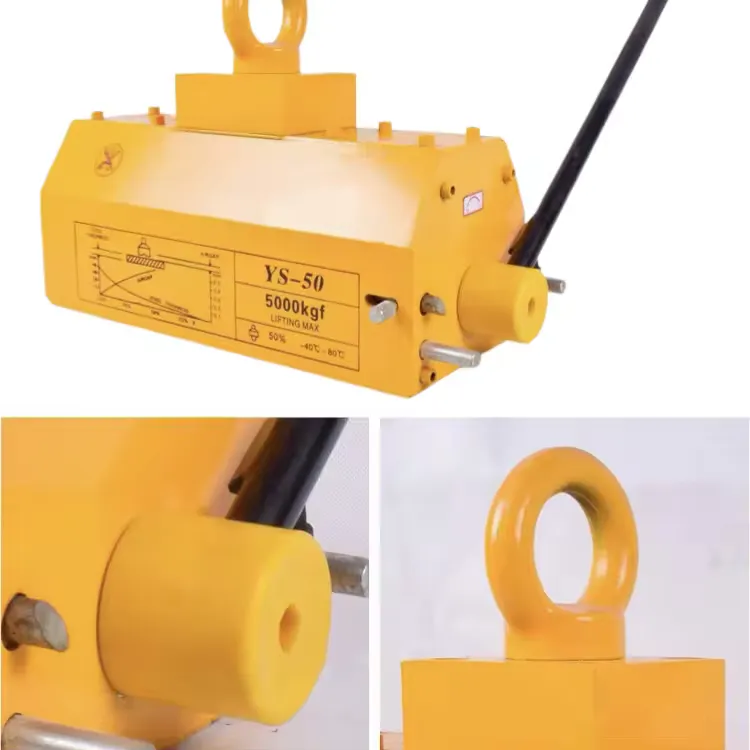magnetic lifting tool
Magnetic Lifting Tools Revolutionizing Material Handling
In the modern industrial landscape, efficiency and safety are paramount. One of the noteworthy innovations that have emerged in material handling technologies is the magnetic lifting tool. These tools harness the power of magnetism to facilitate the movement of heavy, ferrous materials, offering a safe, efficient, and economical solution for a variety of industries, including manufacturing, construction, and logistics.
What are Magnetic Lifting Tools?
Magnetic lifting tools are devices that utilize strong permanent magnets or electromagnets to lift and transport ferromagnetic materials, such as steel and iron. These tools come in various shapes and sizes, from small handheld devices to large, crane-mounted systems. Their design varies based on the application and the weight of the materials they are intended to lift.
The principle behind magnetic lifting is grounded in magnetism; when a magnetic field comes in contact with ferrous materials, it creates an attractive force that allows for the lifting and moving of these materials with ease. This eliminates the need for traditional lifting methods, such as hooks, slings, or chains, which can be cumbersome and time-consuming.
Advantages of Magnetic Lifting Tools
1. Enhanced Safety One of the primary benefits of using magnetic lifting tools is the significant increase in safety for workers. Traditional lifting methods often involve rigging that can fail under stress or can become dislodged during movement. Magnetic lifters, being low-profile and requiring minimal setup, reduce the risks associated with dropped loads and wire or chain injuries.
2. Improved Efficiency Magnetic lifters allow for much faster handling of materials. The setup time is significantly reduced compared to traditional methods. Workers can quickly attach and detach the magnetic tools, which streamlines material movement and enhances productivity on the shop floor or construction site.
3. Versatility These tools are incredibly versatile, capable of lifting a variety of shapes and sizes, including sheets, beams, and plates. Whether in a factory setting or a warehouse, magnetic lifting tools can adapt to different tasks, making them invaluable to multiple industries.
4. Cost-Effective Investing in magnetic lifting tools can lead to significant cost savings. With faster movement of materials, less time spent on setup, and a reduction in workplace accidents, companies can save on labor costs, downtime, and insurance claims.
Applications of Magnetic Lifting Tools
magnetic lifting tool

Magnetic lifting tools find applications in diverse fields. In manufacturing plants, they are used for lifting sheets of steel during production and assembly processes. In shipbuilding, they facilitate the movement of heavy steel components efficiently. Moreover, in logistics, these tools assist with the quick loading and unloading of goods.
Another prominent application is in scrap yards, where magnetic lifters aid in the efficient sorting and handling of scrap metal, enhancing both productivity and safety. They are also valuable in construction sites for lifting heavy structural components, thus contributing to streamlined operations.
Factors to Consider When Choosing a Magnetic Lifting Tool
While magnetic lifting tools offer numerous advantages, choosing the right one requires careful consideration. Some essential factors include
- Weight Capacity It is crucial to select a magnetic lifter with an appropriate weight capacity for the materials being handled.
- Type of Magnet Depending on the application, buyers must choose between permanent magnets and electromagnets. Permanent magnets are simpler and often more reliable, while electromagnets allow for on/off control, which can be advantageous in many situations.
- Surface Condition The condition of the material's surface makes a difference, as imperfections can affect magnetic contact and lifting efficiency.
- Safety Features Look for tools that include safety features, such as alarms or automatic release mechanisms, to enhance operational security.
Conclusion
As industries continue to seek ways to improve efficiency, safety, and cost-effectiveness, magnetic lifting tools present an innovative solution for the handling of heavy materials. With their ability to enhance workplace safety and streamline operations, it's no wonder that these tools are becoming indispensable in various sectors. As technology advances, we can expect even more efficient and effective designs, further solidifying the role of magnetic lifting tools in the future of material handling.
-
Unlock Seamless Relocation with Our Heavy Equipment Moving ExpertiseNewsJun.06,2025
-
Unleash Unrivaled Flexibility with Our Adjustable Gantry CraneNewsJun.06,2025
-
Unleash Heavy-Duty Efficiency with Our Industrial Gantry Crane SolutionsNewsJun.06,2025
-
Revolutionize Steel Handling with Our Magnetic Lifter RangeNewsJun.06,2025
-
Master Equipment Mobility with Premium Machinery Mover SolutionsNewsJun.06,2025
-
Elevate Your Material Handling with Magnetic Lifter TechnologyNewsJun.06,2025
-
YS Permanent Lifting Magnets: The Smarter Way to Handle SteelNewsMay.22,2025
